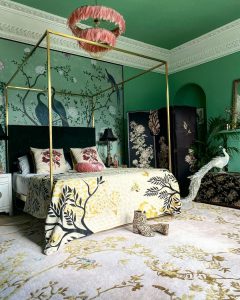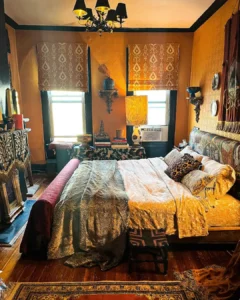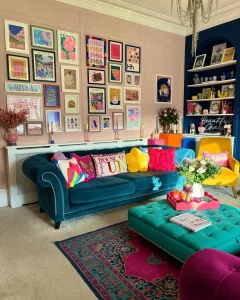‘Maximalist Decor: Your Ultimate Guide to Bold Living Spaces‘ is here to inspire you to embrace the vibrant and eclectic world of maximalist interior design. Maximalism is a design philosophy that celebrates the “more is more” approach, characterized by bold colors, intricate patterns, and a mix of diverse textures and styles. Unlike minimalist decor, which focuses on simplicity and restraint, maximalist decor encourages you to express your personality and creativity without limitations.
The roots of maximalist decor can be traced back to various historical periods, including the opulent Victorian era and the extravagant Art Deco movement. Over time, this style has evolved, incorporating modern elements and reflecting contemporary tastes. Today, maximalist decor is a popular choice for those looking to create unique, lively, and deeply personal living spaces.
In this guide, we will delve into the rich history and evolution of maximalist decor, explore its key principles, and highlight the numerous benefits of adopting this bold style. We will provide practical tips and room-by-room ideas to help you transform your home into a vibrant haven. Whether you’re a seasoned maximalist or new to the concept, this guide will equip you with the knowledge and inspiration needed to bring bold living spaces to life.
History and Evolution of Maximalist Decor
Early Influences
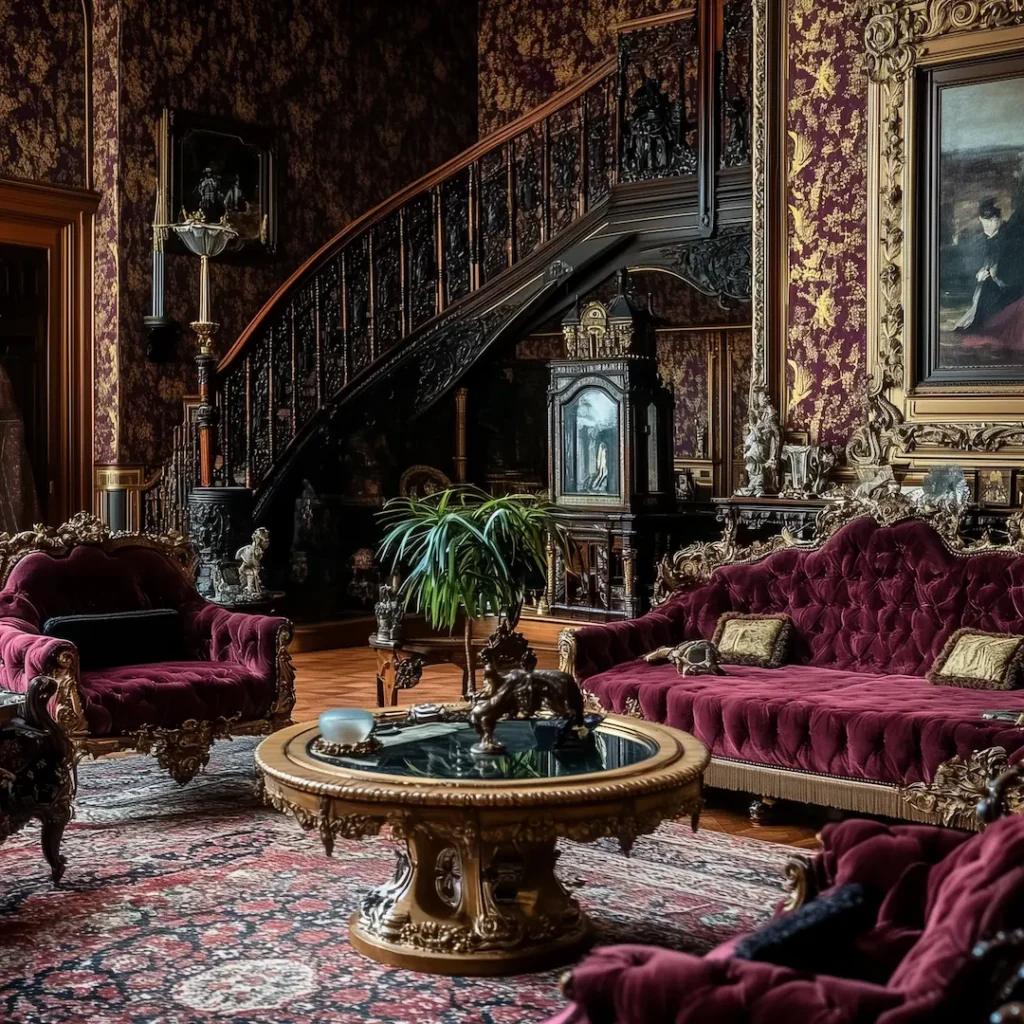
Maximalist decor finds its roots in several historical periods known for their opulence and grandeur. The Victorian era (1837-1901) is a prime example, characterized by ornate furnishings, rich colors, and intricate patterns. During this period, homes were decorated with heavy drapery, elaborate wallpapers, and an abundance of decorative items, reflecting the owner’s wealth and status. Another significant influence is the Baroque period (17th-18th centuries), known for its dramatic use of space, lavish details, and bold contrasts. These early forms of maximalism set the stage for the “more is more” approach that defines maximalist decor today.
Modern Evolution
In the 20th century, maximalism evolved through various design movements. The Art Deco era of the 1920s and 1930s introduced bold geometric patterns, luxurious materials like marble and gold, and vibrant colors. The mid-20th century saw a mix of eclectic styles, with designers like Dorothy Draper embracing maximalist principles by combining bold colors, oversized prints, and an array of textures.
The 1980s brought a resurgence of maximalism, with an emphasis on bold colors, extravagant patterns, and an eclectic mix of styles. This decade’s interior design was marked by a departure from the minimalist trends of the 1970s, favoring more personalized and visually rich spaces.
Key Influences
Maximalist decor has been shaped by various cultural and design influences over the years. Designers like Tony Duquette and Kelly Wearstler have championed the maximalist style, creating spaces that are visually stimulating and richly layered. Duquette’s use of dramatic lighting, bold colors, and eclectic furnishings has made a lasting impact on maximalist design. Similarly, Wearstler’s approach combines luxury with bold aesthetics, making her a prominent figure in modern maximalism.
Today, maximalist decor continues to evolve, influenced by global design trends and the rise of social media platforms like Instagram and Pinterest. These platforms have allowed for a broader dissemination of maximalist ideas, inspiring homeowners to embrace bold and eclectic decor in their spaces.
Key Principles of Maximalist Decor
Bold Colors
One of the defining features of maximalist decor is the use of bold and vibrant colors. Unlike minimalist decor, which often relies on neutral palettes, maximalism celebrates a diverse range of hues. To create a cohesive yet dynamic look, start with a primary color and build a palette around it, incorporating complementary and contrasting shades. Bold colors can be used on walls, furniture, and accessories to create a lively and inviting atmosphere.
Patterns and Textures
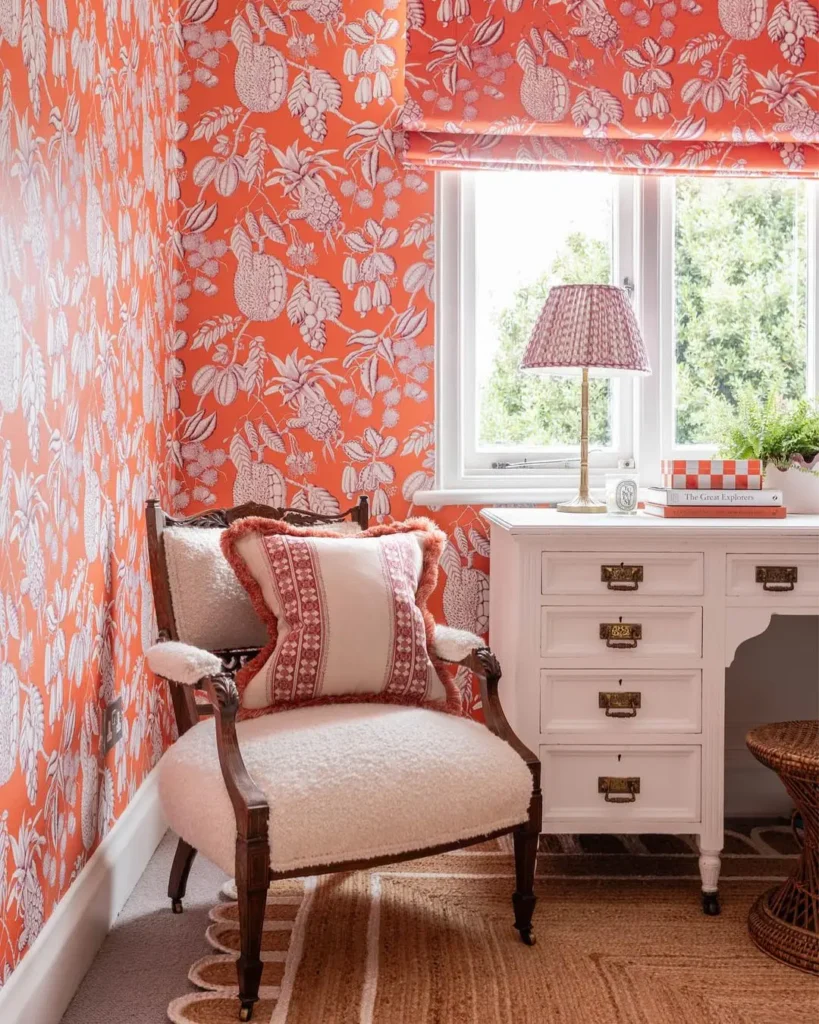
Maximalist decor thrives on the interplay of different patterns and textures. Mixing florals, geometrics, stripes, and animal prints can create a visually stimulating environment. When combining patterns, consider the scale and color scheme to ensure harmony. Textures also play a crucial role in maximalist decor, adding depth and interest to a space. Velvet, silk, and leather are popular choices for upholstery, while metallics and natural materials like wood and stone can enhance the overall aesthetic.
Layering and Mixing Styles
Layering is essential in maximalist decor. This involves combining various design elements, such as rugs, throws, cushions, and artwork, to create a rich and layered look. Each layer should complement the others, adding to the overall complexity and depth of the space. Mixing different styles, from vintage to contemporary, can also enhance the maximalist aesthetic. The key is to maintain a balance, ensuring that each element contributes to a cohesive whole.
Use of Statement Pieces
Statement pieces are a hallmark of maximalist decor. These can be anything from a bold piece of artwork to an oversized chandelier or a uniquely patterned sofa. Statement pieces serve as focal points, drawing the eye and adding character to the space. When selecting statement pieces, choose items that resonate with your personal style and contribute to the overall theme of the room.
Maximalist decor is about creating spaces that are uniquely yours, reflecting your personality and tastes through bold choices and eclectic combinations. By embracing these key principles, you can transform your home into a vibrant and inviting sanctuary that celebrates the beauty of maximalism.
Benefits of Maximalist Decor
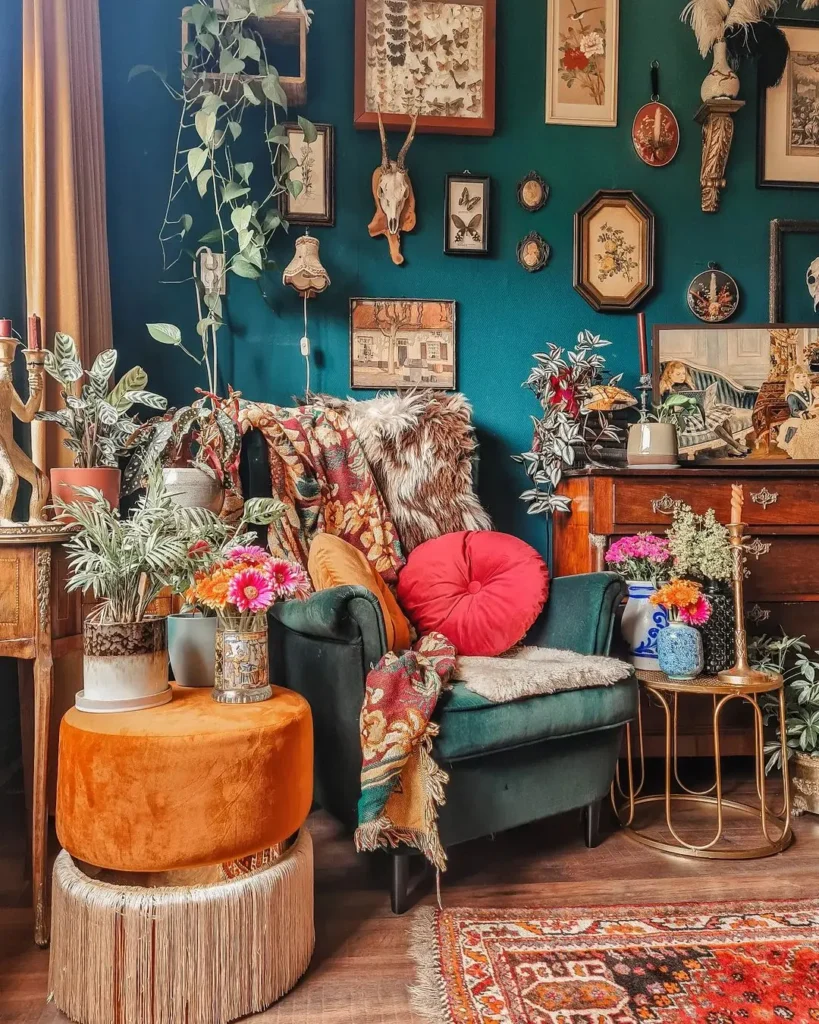
Personal Expression
Maximalist decor offers unparalleled opportunities for personal expression. Unlike more restrictive styles, maximalism allows you to showcase your individuality through a rich tapestry of colors, patterns, and textures. This design approach encourages you to incorporate items that reflect your personal tastes, hobbies, and experiences, resulting in a space that feels uniquely yours. Whether it’s a cherished piece of artwork, a collection of vintage finds, or bold family photos, maximalist decor enables you to tell your story through your interior design choices.
Creating a Vibrant and Inviting Space
A key benefit of maximalist decor is its ability to create vibrant and inviting living spaces. The use of bold colors and eclectic decor items can energize a room, making it more lively and welcoming. Maximalist spaces often feel warm and dynamic, encouraging social interaction and providing a visually stimulating environment. This style is particularly effective in communal areas like living rooms and dining rooms, where a vibrant atmosphere can enhance gatherings and create memorable experiences for guests.
Flexibility and Creativity
Maximalist decor offers tremendous flexibility and fosters creativity. There are no strict rules or guidelines, allowing you to experiment with different design elements and combinations. This freedom enables you to continually evolve your space, adding new items or rearranging existing ones to keep the decor fresh and exciting. The flexibility of maximalism makes it easy to incorporate new trends or personal mementos without disrupting the overall aesthetic, ensuring your home remains a true reflection of your dynamic tastes.
Room-by-Room Maximalist Decor Ideas
Living Room
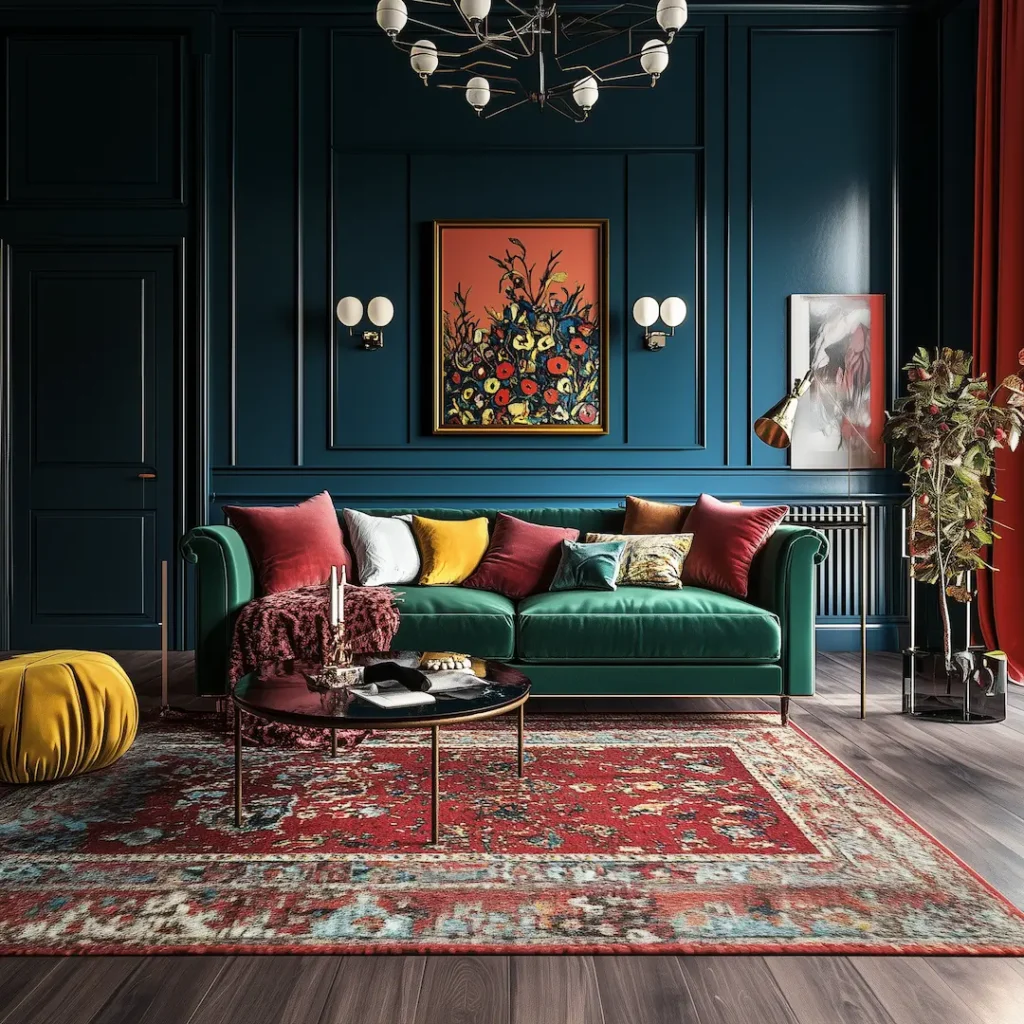
The living room is often the focal point of a home, making it an ideal space to showcase maximalist decor. Start by selecting a bold color scheme that sets the tone for the room. Deep jewel tones, such as emerald green, sapphire blue, and ruby red, can create a luxurious and welcoming ambience. When arranging furniture, consider incorporating statement pieces like a velvet sofa or an intricately patterned rug. Layering is key in a maximalist living room, so add various textures through throw pillows, blankets, and wall art. Finally, use unique lighting fixtures and a mix of eclectic accessories to complete the look.
Bedroom
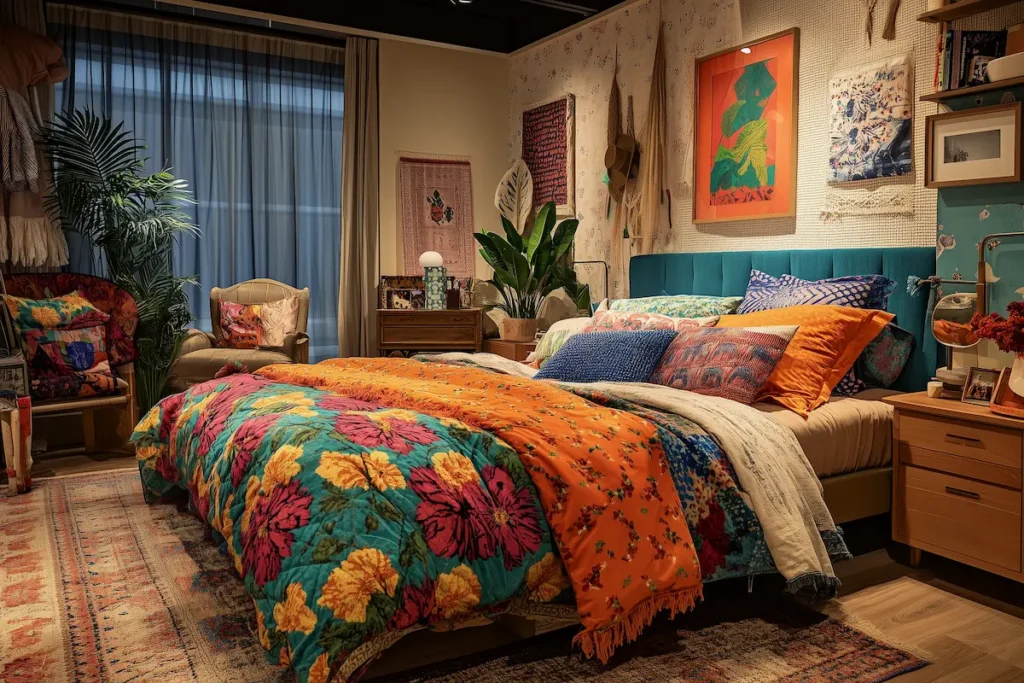
In a maximalist bedroom, comfort meets creativity. Begin with a striking color palette that reflects your personality. Mix and match different patterns for bedding, such as floral duvet covers paired with geometric pillows. Layering is essential, so use multiple textiles like quilts, throws, and cushions to add depth and coziness. Personal touches are crucial in a bedroom; display personal mementos, family photos, and meaningful artwork to make the space truly yours. Incorporate a statement headboard or a bold piece of furniture to anchor the room’s design.
Kitchen
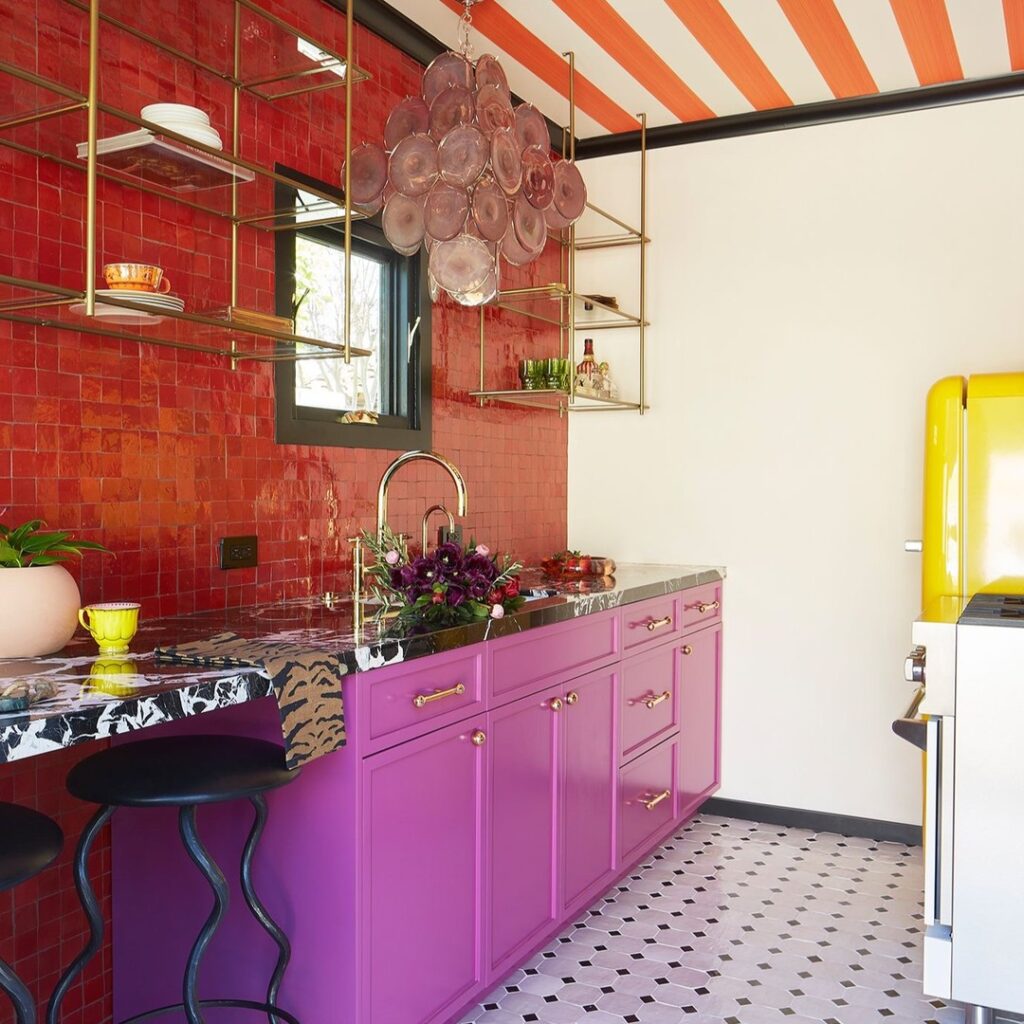
The kitchen is a functional space that can still benefit from maximalist principles. Bold backsplashes in colorful tiles or unique patterns can make a significant impact. Opt for statement appliances in bright colors or metallic finishes to add flair. Decorative storage solutions, such as open shelves displaying colorful dishware or vintage kitchen tools, can combine practicality with aesthetics. Add pops of color through kitchen textiles like towels, rugs, and curtains to tie the room together.
Bathroom
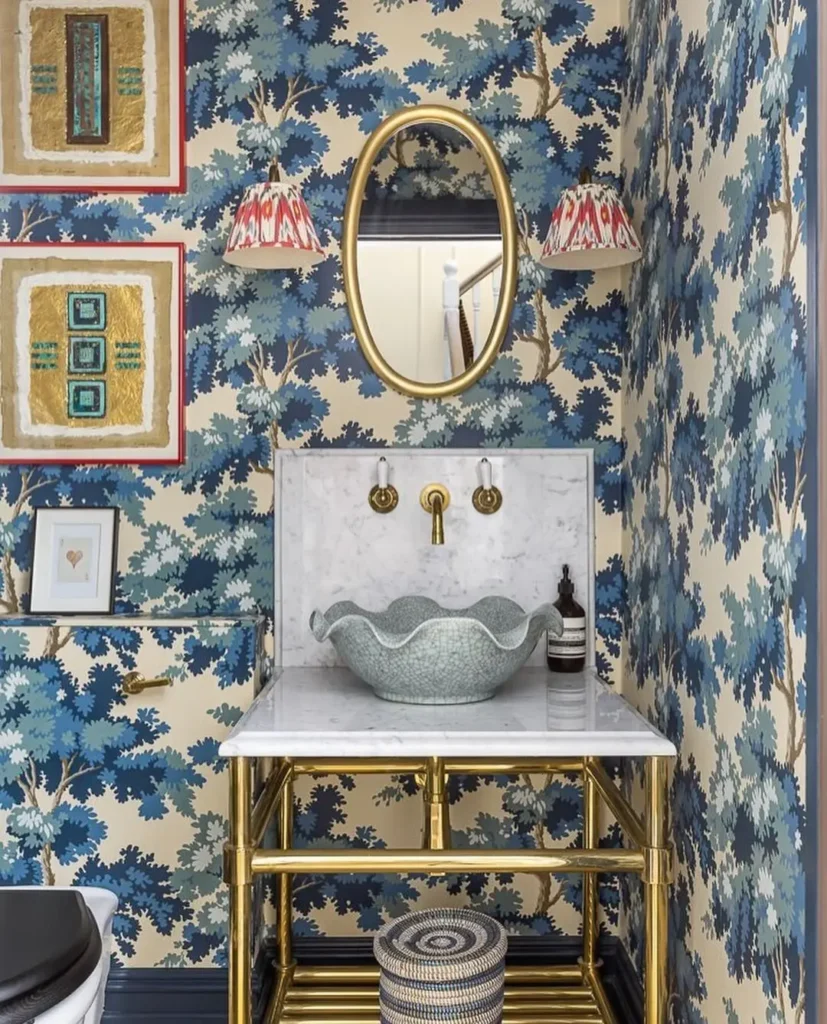
Bathrooms offer a perfect opportunity to experiment with maximalist decor in a smaller space. Choose a bold wallpaper or paint color to create an instant wow factor. Select statement fixtures, such as a vintage-inspired clawfoot tub or an ornate mirror, to add character. Accessorize with eclectic items like unique soap dispensers, colorful towels, and decorative storage containers. Incorporating plants can also bring a fresh and vibrant touch to the bathroom.
Small Spaces
Maximalism can thrive even in small spaces. The key is to maximize every inch with intentional design choices. Use multi-functional furniture, such as a storage ottoman or a fold-out desk, to save space while adding style. Opt for vertical storage solutions like tall bookshelves or hanging organizers to keep the floor area clear. When decorating, choose bold colors and patterns that make a statement without overwhelming the space. Mirrors can also help create the illusion of a larger room by reflecting light and adding depth.
Seasonal and Thematic Maximalist Decor
Spring and Summer
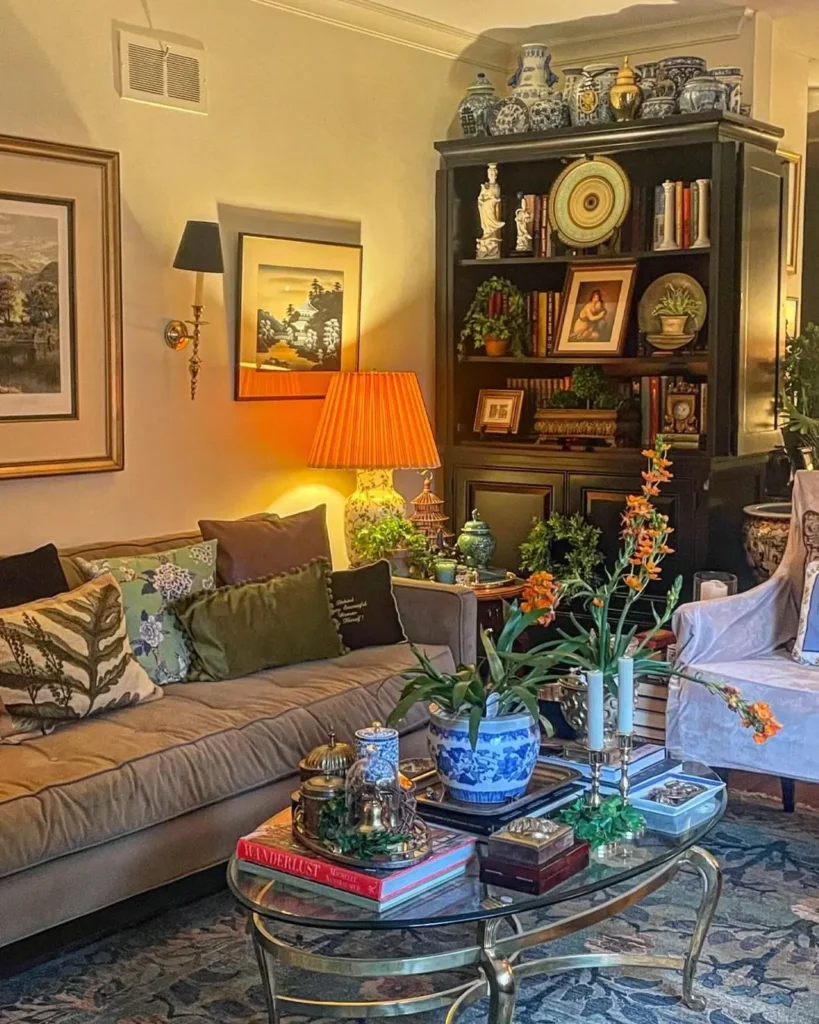
Spring and summer are ideal seasons to experiment with bright and lively maximalist decor. Embrace vibrant colors like sunny yellows, fresh greens, and ocean blues to reflect the seasonal change. Floral patterns can dominate during these months, whether in wallpaper, upholstery, or decorative accents. Consider incorporating fresh flowers or indoor plants to bring a touch of nature inside. Lightweight textiles, such as linen and cotton, can add to the airy feel of the space. To enhance the maximalist aesthetic, layer these with bold patterns and rich textures.
Fall and Winter
For fall and winter, maximalist decor shifts towards warmer, cozier tones. Rich colors like deep reds, burnt oranges, and dark greens can create a snug and inviting atmosphere. Incorporate elements like heavy curtains, plush rugs, and thick throws to add warmth and comfort. Patterns such as tartan, paisley, and damask are perfect for this time of year, contributing to a layered and intricate look. Decorative items like candles, antique ornaments, and velvet cushions can enhance the maximalist vibe and provide a festive touch during the holiday season.
Related post: Maximalist Fall Decor: How to Embrace Rich Colors and Layers
Holiday Decor
Maximalist decor is particularly effective for holiday celebrations. Whether it’s Christmas, Halloween, or Thanksgiving, the “more is more” philosophy shines during these times. For Christmas, use a variety of decorations, from oversized baubles and tinsel to eclectic ornaments and bold wreaths. Halloween allows for dramatic contrasts and a mix of gothic elements with vibrant fall colors. Thanksgiving decor can incorporate a rich palette of autumnal hues, mixed with textures like burlap, wood, and metallics. The key is to create a festive, immersive environment that reflects the celebratory spirit of the season.
Practical Tips for Maximalist Decor
Mixing Patterns
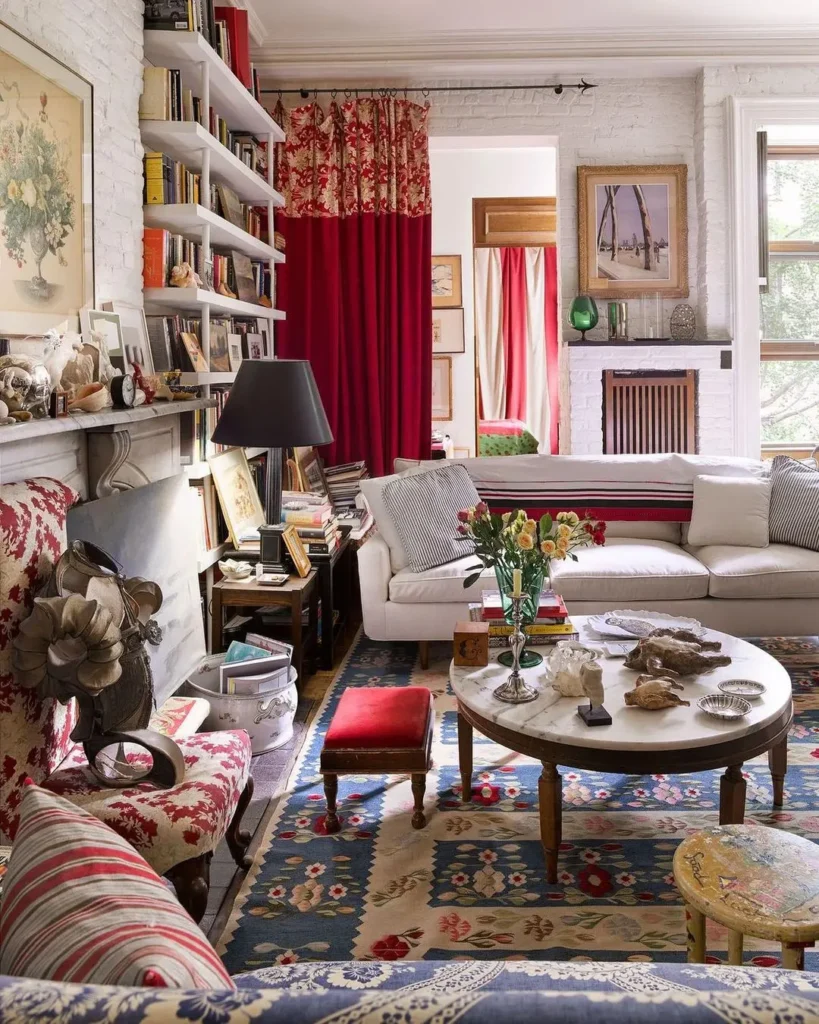
Mixing patterns is a fundamental aspect of maximalist decor. To do this effectively, start by selecting a base pattern that you love. This could be anything from a bold floral to a striking geometric design. Once you have your base, choose additional patterns that complement it in terms of color and scale. For instance, pair large florals with smaller checks or stripes. The key is to maintain a balance, ensuring that the patterns work harmoniously rather than clashing. Using a consistent color palette can help tie different patterns together and create a cohesive look.
Choosing Colors
Color is crucial in maximalist decor. Begin by choosing a primary color that will dominate the space. This could be a bold shade like emerald green, royal blue, or vibrant red. Next, select secondary colors that complement the primary hue. These can be used in smaller doses, such as in accessories, artwork, or accent furniture. To add depth and interest, incorporate contrasting colors through textiles, decor items, or wall art. Remember that maximalist decor thrives on bold and unexpected combinations, so don’t be afraid to experiment with color.
Budget-Friendly Maximalist Decor
Maximalist decor doesn’t have to be expensive. There are plenty of ways to achieve a bold and eclectic look on a budget. Thrift stores and flea markets are treasure troves for unique and affordable decor items. Look for vintage pieces, eclectic furniture, and quirky accessories that can add character to your space. DIY projects are another cost-effective way to enhance your decor. Consider repainting furniture, creating your own artwork, or sewing custom cushions and curtains. Mixing high and low-end pieces can also create a luxurious look without breaking the bank. Invest in a few statement pieces and complement them with budget-friendly finds.
Personalization and Unique Touches
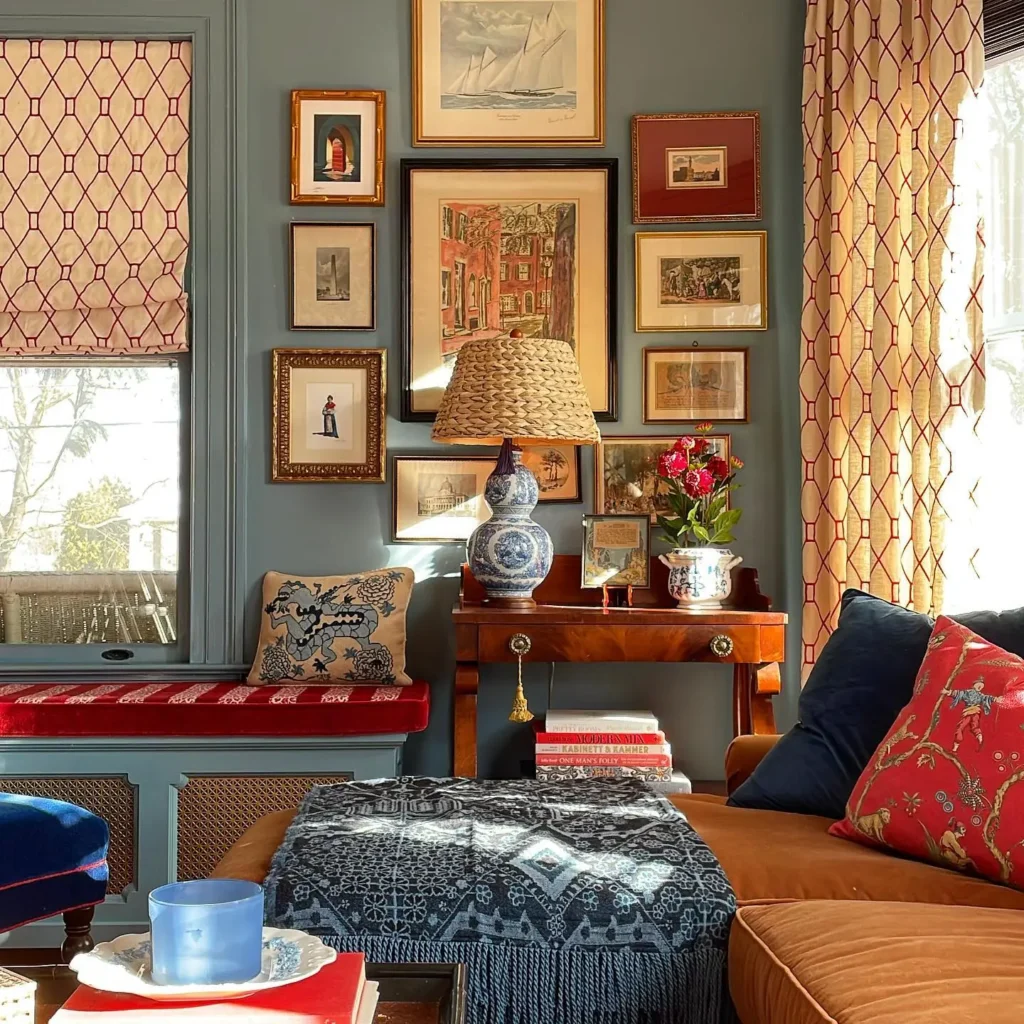
Adding Personal Items
One of the most compelling aspects of maximalist decor is its capacity for personalization. This style thrives on individuality and the unique stories that personal items bring to a space. Start by incorporating items that hold sentimental value, such as family heirlooms, travel souvenirs, or cherished artworks. These pieces not only add depth and character to your decor but also create a deeply personal and meaningful environment. Display these items prominently on shelves, walls, or within curated vignettes to ensure they become focal points within your maximalist space.
Unique Finds
Maximalist decor is the perfect platform for showcasing unique and eclectic finds. This could include vintage pieces, quirky antiques, or handmade items that reflect your personal taste. Flea markets, antique shops, and online marketplaces like Etsy are great places to discover one-of-a-kind items. Don’t be afraid to mix styles and eras; the beauty of maximalism lies in its eclectic nature. A mid-century modern lamp can sit comfortably next to a Victorian armchair, unified by a cohesive color scheme or thematic element. Incorporating these unique finds will make your space stand out and reflect your distinct personality.
Expert Insights and Future Trends
Interior design experts often provide invaluable insights into achieving successful maximalist decor. Kelly Wearstler, a renowned interior designer, emphasizes the importance of layering different textures and materials to create a rich and tactile environment. She suggests mixing metals, woods, and fabrics to add depth and interest, stating that maximalist interiors should feel like “sculptures” and create a sense of adventure (LuxDeco).
Jonathan Adler, another prominent designer, advises embracing bold patterns and colors but balancing them with negative space to prevent the room from feeling overwhelming. He highlights the importance of making each element in the room purposeful and impressive, stating, “I’m a maximalist decorator and a minimalist designer… I want to be surrounded by all the people and things I love most” (homesandgardens.com).
Maximalist decor continues to evolve, with new trends emerging that keep the style fresh and exciting. One notable trend is the use of sustainable and environment-friendly materials. As awareness of environmental issues grows, designers are incorporating reclaimed wood, recycled metals, and organic fabrics into their maximalist designs. This approach not only supports environmental sustainability but also adds unique character to the decor (previously on Portaire).
Conclusion
‘Maximalist Decor: Your Ultimate Guide to Bold Living Spaces‘ has provided you with the tools and inspiration to embrace the dynamic and vibrant world of maximalist interior design. From understanding its rich history and evolution to mastering the key principles and practical tips, you are now equipped to transform your home into a lively, inviting, and uniquely personal space.
Maximalism is about breaking free from the constraints of minimalism and celebrating your individuality through bold colors, eclectic patterns, and diverse textures. Whether you’re enhancing your living room with vibrant decor, adding personal touches to your bedroom, or experimenting with seasonal themes, maximalist decor offers endless possibilities for creativity and self-expression.
To find the sweet spot in maximalist decor check out our post on ‘Maximalist Decor: How to Balance Eclectic and Overwhelming‘.
As you embark on your maximalist journey, remember to have fun and let your personality shine through. Don’t be afraid to mix styles, play with patterns, and layer different elements to create a space that truly reflects who you are. We encourage you to share your own maximalist decor ideas and experiences, and to continue exploring and experimenting with this exciting design style.
Frequently Asked Questions about Maximalist Decor
What is maximalist decor?
Maximalist decor is a design style that embraces a “more is more” philosophy, characterized by bold colors, diverse patterns, and an eclectic mix of textures and styles. It encourages personal expression and creativity, resulting in vibrant and dynamic living spaces.
How do I start decorating in a maximalist style?
Begin by choosing a bold color palette and incorporating various patterns and textures. Mix and match different styles and periods, and don’t be afraid to layer decor elements. Focus on personalizing your space with items that reflect your tastes and experiences.
Can I achieve maximalist decor on a budget?
Yes, maximalist decor can be achieved on a budget. Thrift stores, flea markets, and online marketplaces like Etsy offer unique and affordable decor items. DIY projects and mixing high-end pieces with budget finds can also help you create a luxurious look without overspending.
How do I mix patterns effectively in maximalist decor?
To mix patterns effectively, start with a base pattern and select additional patterns that complement it in terms of color and scale. Use a consistent color palette to tie different patterns together and maintain balance. Try various combinations to discover the best fit for your space.
Is maximalist decor suitable for small spaces?
Yes, maximalist decor can thrive in small spaces. The key is to maximize every inch with intentional design choices, such as multi-functional furniture and vertical storage solutions. Bold colors and patterns can make a statement without overwhelming the space, and mirrors can create the illusion of a larger room.
Related Posts:
- Colorful and Eclectic: How to Create a Boho Maximalist Bedroom
- How to Style Your Maximalist Home with Colorful Pillows

